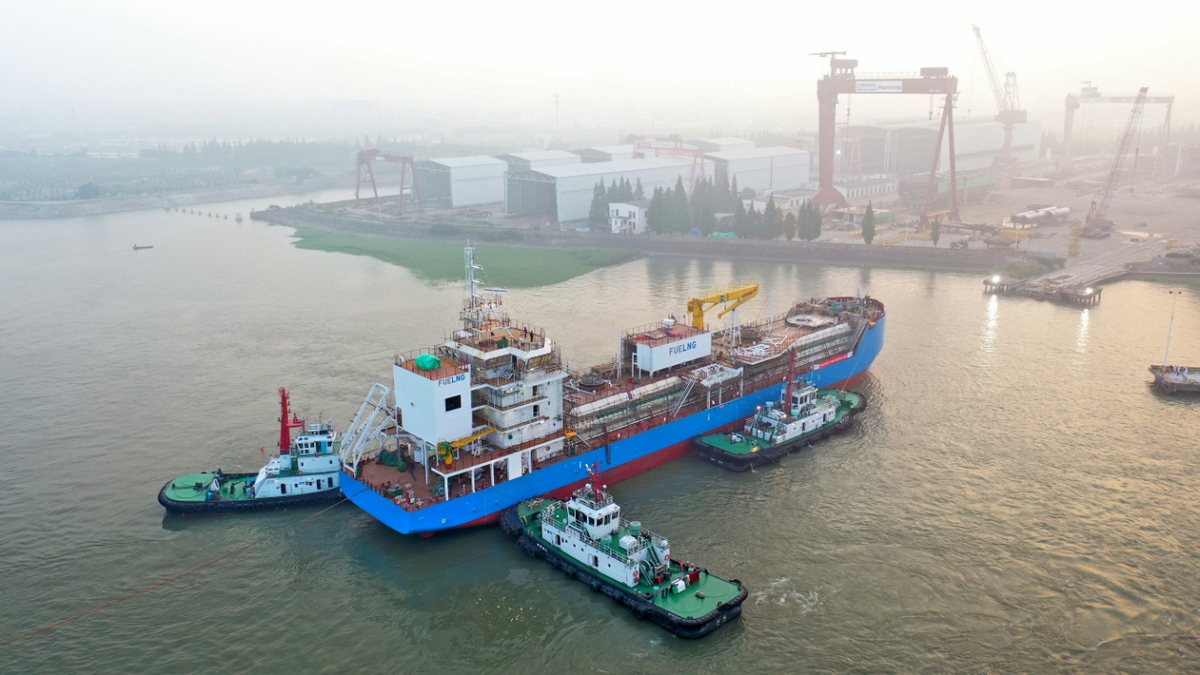
Keppel Offshore & Marine Ltd (Keppel O&M) has just delivered the liquefied natural gas (LNG) bunkering vessel designed for Singapore, the FueLNG Bellina, ordered by FueLNG, the joint venture between Keppel Offshore & Marine and Shell Eastern Petroleum (Pte) Ltd.
FueLNG Bellina is the world's first bunkering ship with Smart Notation for its provision of intelligent digital services (Keppel O&M proprietary VesselCare solutions) that enable remote monitoring and real-time support of ship operations.
Designed to provide bunkering of a wide range of vessels with heights ranging from 3 to 23 meters above the water level, its LNG refuelling capacity can range from 100 to 1,000 cubic meters / hour.
The ship, with a 120 meters length overall (LOA) and 20 meters width, has two aft azimuth thrusters and a bow thruster that allow a high degree of maneuverability and uses boil-off gas as a fuel for electricity generation and propulsion, thereby reducing CO2 emissions, NOx and particulate matter.
FueLNG, the joint venture between Keppel O&M and Shell Eastern Petroleum (Pte) Ltd, which was licensed as a LNG bunkering supplier from the Singapore Maritime and Port Authority in 2016, supplies LNG to a wide variety of vessels through the truck-to-ship or ship-to-ship bunkering, participating in building a world-class LNG bunkering network and encouraging the adoption of LNG as a marine fuel.
For Keppel O&M shipyard this is the second 7,500 cubic meter LNG bunkering vessel delivered, after the Avenir Advantage built in 2020 on behalf of Future Horizon Pte Ltd - a joint venture company between MISC Berhad and Avenir LNG Limited (the joint venture between Stolt-Nielsen, Hoegh LNG and Golar LNG) - and chartered to the oil company Petronas for a period of three years which is currently sailing under the flag of Malaysia.
Russia's Gazprom Neft has also announced progress regarding the construction of the country's first natural gas bunker ship with the installation of storage tanks (each tank has a capacity of 2,900 cubic meters, for a total ship capacity of 5,800 cubic meters) and other cryogenic equipment.
The ship will operate in the ports of St. Petersburg, Ust-Luga, Primorsk and others in the Baltic Sea and will now be equipped with a cargo bridge and cargo handling, pipelines and equipment.
100 meters long and 19 meters wide, it is Arc4 class, capable of independently navigating ice up to 0.8 meters thick, and is designed to exploit boil-off gas as a fuel for generating electricity and propulsion.
Source: Keppel O&M e altre
 EN
EN  it
it

